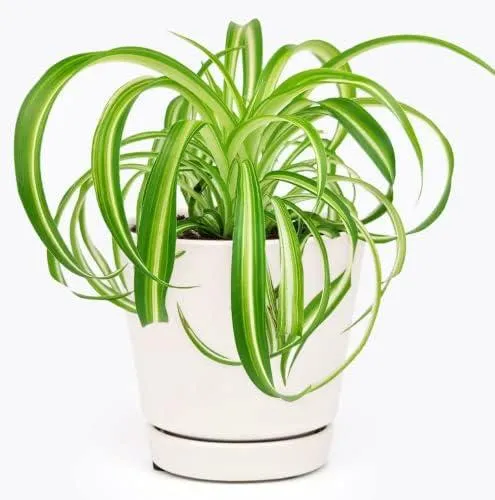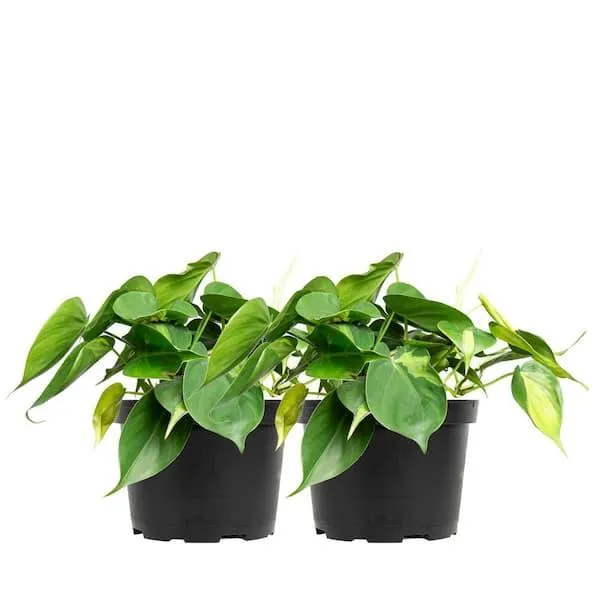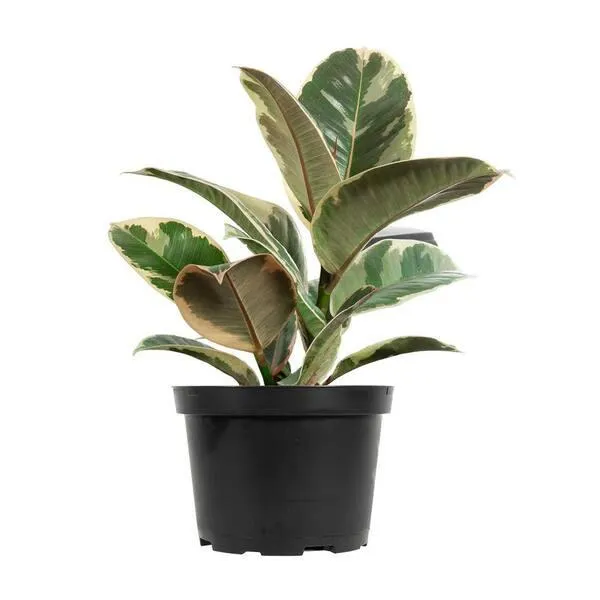Your Complete Guide to Enjoying Variegated Houseplants
If you’re looking to add some visual interest to your home with low-maintenance plants, consider variegated houseplants. Their colorful leaves provide a beautiful contrast. As an avid plant parent myself, I’ve learned a lot over the years about caring for these unique plants. In this article, I’ll answer all your questions about variegated plants so you can select the perfect ones for your space.
What Are Variegated Plants?
Basically, variegated plants have leaves with more than one color. Most commonly, the leaves will be green but with splashes or stripes of white, yellow, pink or cream. This color patterning is the result of less chlorophyll present in certain parts of the leaf. Chlorophyll is what makes plants green, so areas with less of it show through in different hues.
The variegation comes from a genetic mutation that occurred naturally. Some popular variegated houseplants include golden pothos, Chinese evergreen, marble queen pothos, and flamingo flower. Their brightly patterned leaves add an artistic touch and lots of visual appeal. Kind of like having a moving plant painting in your home!
Benefits of Growing Variegated Plants
- Brighten up your space without a lot of effort. Variegated foliage stands out beautifully against walls or other backgrounds.
- Low maintenance. Most varieties adapt well to typical indoor conditions and are quite tolerant of average care.
- An splash of visual interest all year. Their colorful foliage remains attractive whether the plants are actively growing or dormant.
- Easy to propagate. It’s fun and satisfying to multiply your collection by propagating cuttings from existing plants.
Top Variegated Houseplants to Consider
Here are some of the most popular and easy-to-find variegated plants for home interiors:
Golden Pothos:

This enduring classic trailers gracefully with its heart-shaped green and yellow leaves. Pothos thrives in low to medium light and endures long periods between waterings. Their mottled leaves add an understated tropical flair.
Chinese Evergreen:
Featuring waxy oval leaves splashed or edged in cream, Chinese evergreen brings old-world elegance. It prefers brighter windows and weekly watering. Perhaps arguably the most statuesque variegated plant.
Marble Queen Pothos:
A cultivar with bolder white variegation reminiscent of marble or lace. In my experience, it requires similar care to regular golden pothos. A dazzling pick for hanging baskets or tabletops.

Neon or Flamingo Prayer Plant:
These prayer plants with pinkish new growth absolutely shock me each time! They’re more temperamental than other options listed needing high humidity. A stunner for a bathroom perhaps?
Tips for Growing Variegated Beauties
While some varieties adapt quite well to typical home conditions, variegated plants do have specialized needs. Follow these tips from my experiences to keep your plants healthy and their foliage vibrant:
- Provide medium to bright, indirect light. Direct sun may cause leaves to burn at edges or turn yellowish.
- Allow soil to dry out slightly between waterings. Overwatering leads to rot, so check soil moisture frequently.
- Fertilize during active growth periods using a diluted, balanced houseplant food. They appreciate the boost.
- Control pests promptly. Mealybugs especially love variegated plants, so keep an eye out.
- Give plants the RH they require. Prayer plants and calatheas need >50%, others around 40-50%. Consider a pebble tray or humidifier.
- Avoid dramatic temperature fluctuations. Cooler drafts or high AC can damage foliage.
- Propagate intentionally! Maintain variegation by taking cuttings only from variegated sections of plants.
From my experience, providing the right conditions is key to keeping variegation vibrant long-term. Does that help explain their specialized needs?
Selecting Healthy Specimens
When shopping for variegated beauties, take your time inspecting plants at the store. Choose specimens displaying:

- Bright, clear variegation without loss of pigmentation
- Turgid, vibrant green leaves without yellowing or browning
- Firm stems that aren’t mushy at the base
- Intact root systems without rot or pests in the soil
- Plants that have not yet begun flowering (a sign of stress that diverts energy)
Avoid any with wilted or stained foliage. Buying healthy plants means less TLC needed post-purchase. Hopefully those tips help you pick winners from the store selection!
Dealing With Variegation Instability
On occasion, variegated mutants can lose their markings over time. The new growth may revert fully green. This instability is kinda a bummer, but no biggie according to experts.
To resolve, simply remove any all-green sections by cutting them away with clean, sharp scissors. Toss those bits and allow the remaining variegated regions to continue growing as normal. You can try rooting the cuttings to continue a full green cultivar separately too for funsies.
Is this making sense so far? Let me know if any other plant problems creep up – I’m happy to offer advice based on sorts of strange plant situations I’ve faced over the years.
Showcasing Your Variegated Beauties
Final step – now that you’ve got your variegated plants dialed in, flaunt them! Here are some display ideas:

- Hang trailing varieties in woven baskets or over shelves for a lovely effect.
- Feature upright varieties in bright ceramic or glass pots to set off their foliage patterns.
- Group potted plants of different sizes together for visual depth and interest.
- place plants in South- or West-facing windows to backlight leaves beautifully.
- Weave vines or tendrils up picture frames or tall trellises for wall installations.
Some of my favorite combo ideas are neon pothos with spider plants, or marble queen paired with red-edged dracena. Get creative and have fun showing off your babes! I bet they’ll be the talk of your next party too. Your guests will be so jelly at your plant skills, LOL!
In conclusion, variegated houseplants offer a unique look and low-fuss care. I hope this guide answered all your questions and inspired you to bring some home. Feel free to reach out if you need any other plant advice – I’d be happy to help however I can. Happy planting!
Top Variegated Houseplants
| Plant | Care Level | Light Needs | Size | Additional Notes |
|---|---|---|---|---|
| Peperomia | Easy | Medium | Small | Low maintenance, thrives in low light |
| Chinese Evergreen | Easy | Medium | Medium | Tolerates low light, attractive foliage |
| Pothos | Very Easy | Low | Vining | Thrives in low light and humidity, toxic to pets |
| Philodendron | Easy | Medium | Medium/Vining | Varied varieties, tolerates low light |
| Polka Dot Plant | Easy | Medium | Small | Colorful foliage, blooms infrequently |
| Zebra Plant | Easy | Medium | Small | Showy stripes, thrives in low humidity |
FAQ
- What kinds of plants have variegated leaves?
There are lots of plant varieties that basically have leaves with stripes, splotches or other patterns on them instead of being all green. Some common examples are spiders plants, English ivy, peace lilies and monstera deliciosa which has those cool slit patterns. - Do variegated plants need extra care?
While variegated plants don’t strictly need kind of special care, the spots of color on their leaves sometimes make them a little more sunlight sensitive. So you may wanna put them somewhere gets bright light but no direct sun, at least not for long time periods. Water and fertilizer needs are generally the same though. - Why do some plants develop variegated leaves?
The causes aren’t totally clear but it seems to be related to pigment mutations in the plant’s genes. Some experts think it’s nature’s way of diversifying and adapting plant species over time. Isn’t it always amazing how plants evolve to survive? Perhaps variegation turns out to be a natural defense against insect pests or diseases too. Who knows! - Will variegated leaves fade over time?
Potentially yes, but not always. A lot depends on the plant variety and growing conditions. If they’re getting too much sun the colored parts may fade faster. At the same time, some variegated plants seem very stable and don’t lose their markings. Giving them optimal care helps maintain the variegation longer. Does that help answer your question? - Can variegated leaves revert to all green?
On occasion, variegated leaves may sort ofmutate and produce new growth that has no más stripes or spots. This is known as reverting. It can happen due to environmental stresses like too much sun exposure or when the plant isn’t growing in ideal conditions. However, there is no need to panic! Cut off the non-variegated sections and the rest of the plant should keep its markings. - How can I propagate a variegated plant?
The best way to propagate and preserve variegation is through stem or leaf cuttings, not from seed. When grown from seed, the baby plant may end up all green depending on its genes. Taking tip cuttings in spring gives you the highest chance of new growth matching the parent plant. Always remove any all-green shoots that form just to be safe. - Are variegated plants more valuable?
Typically yes, a variegated variety commands a higher price tag than its all-green counterpart. This is because variegation is caused by genetic mutations that don’t always come true from seeds. Some rare or hard-to-find variegated specimens can be quite expensive! It makes me wonder, are plant growers like animal breeders selecting for the rarest traits? Food for thought.
